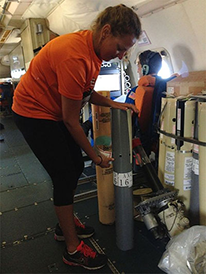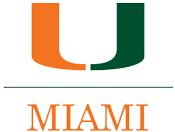 February 15, 2017 (Source: UM/RSMAS) - Last year’s devastating category-5 hurricane—Matthew—may be one of many past examples of a tropical storm fueled by massive rings of warm water that exist in the upper reaches of the Caribbean Sea.
February 15, 2017 (Source: UM/RSMAS) - Last year’s devastating category-5 hurricane—Matthew—may be one of many past examples of a tropical storm fueled by massive rings of warm water that exist in the upper reaches of the Caribbean Sea.
In a study conducted in the region two years prior to when Matthew’s trekked across the Caribbean Sea, the research team in the Upper Ocean Dynamics Laboratory at the University of Miami (UM) Rosenstiel School of Marine and Atmospheric Science (RSMAS) deployed 55 aircraft ocean instruments from the National Oceanographic Atmospheric Administration’s WP-3D aircraft. The purpose of the scientific mission was to measure ocean temperature, salinity, and currents to understand the structure of these warm-water eddies.
The science team obtained vital information about the physical characteristics within one large warm-water eddy, which likely originated from the North Brazil Current, and analyzed its potential influence on sub-surface ocean conditions during the passage of tropical cyclones.
When analyzing the data they found a barrier layer, an upper ocean feature created by the Amazon-Orinoco freshwater river outflow, that makes mixing in the upper ocean waters less efficient during wind events. This feature, and the fact that warm ocean eddies are known to assist in the intensification of hurricanes due to deep warm thermal layers, lead the researchers to theorize that the barrier layer within a warm ocean eddy may result in an even more favorable upper ocean environment for hurricane intensification.
“Our study is important because tropical cyclone intensity forecasts for several past hurricanes over the Caribbean Sea have under-predicted rapid intensification events over warm oceanic features,” said Johna Rudzin, a PhD student at the UM Rosenstiel School and lead author of the study.











